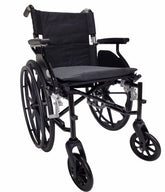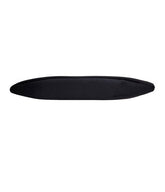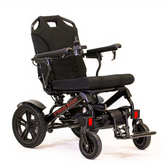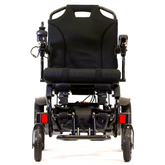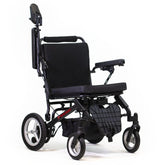Compression Socks Measuring Guide
21 Aug 2023
Compression socks are an effective solution for enhancing leg health, improving circulation, and reducing discomfort. However, to experience their full benefits, it is crucial to find the right fit. In this comprehensive measuring guide, we will walk you through the necessary steps to ensure you select compression socks that provide optimal comfort and support. Let's dive in!
1. Why Proper Measurement Matters:
Accurate measurement is essential when choosing compression socks. Ill-fitting socks may not deliver the desired level of compression, leading to discomfort or inadequate support. To ensure effective results, follow these steps to measure your legs correctly.
2. Measuring Guide:
Before you begin, gather a flexible measuring tape and ensure your legs are free from swelling or edema. It's best to measure your legs in the morning when they are least swollen. Follow these steps:
Step 1: Ankle Circumference:
Start by measuring the circumference of your ankle at its narrowest point, just above the ankle bone. Make sure the measuring tape is snug but not too tight against your skin. Note down the measurement in inches or centimeters.
Step 2: Calf Circumference:
Next, measure the circumference of your calf at its widest point. Again, ensure the tape measure is snug against your skin without being overly tight. Record the measurement.
Step 3: Leg Length:
Measure the length of your leg from the floor to the bend of your knee or to the point where you want the compression sock to reach. This measurement helps determine the appropriate sock length for your needs.
3. Choosing the Right Size:
Once you have your measurements, refer to the sizing chart provided by the compression sock manufacturer. Different brands may have slightly different sizing guidelines, so it's crucial to follow their specific recommendations. Typically, sizing charts consider both ankle and calf measurements to determine the appropriate size.
If your measurements fall between two sizes, it's generally recommended to opt for the larger size for a more comfortable fit. Properly fitted compression socks should feel snug but not excessively tight or constricting.
4. Considerations for Different Compression Levels:
Based on your specific needs and the compression level required, you may need to consider additional measurements. Some compression socks come in different lengths, such as knee-high, thigh-high, or pantyhose style. Be sure to measure the appropriate length based on your desired coverage and follow the manufacturer's size guidelines accordingly.
5. Seek Professional Guidance:
If you have specific medical conditions or concerns, it is always advisable to consult with a healthcare professional or a certified fitter experienced in compression garments. They can provide personalized guidance and help you find the perfect fit for your unique requirements.
Conclusion:
Proper measurement is essential when selecting compression socks to ensure optimal comfort and effectiveness. By accurately measuring your ankle circumference, calf circumference, and leg length, you can confidently navigate the sizing chart provided by the manufacturer. Remember that seeking professional guidance is beneficial, especially if you have specific leg conditions or concerns.
Investing in well-fitted compression socks is a step towards improved leg health and overall well-being. Enjoy the benefits of enhanced circulation, reduced leg fatigue, and improved comfort by following this measuring guide. Embrace the perfect fit and experience the relief and support that compression socks provide.
1. Why Proper Measurement Matters:
Accurate measurement is essential when choosing compression socks. Ill-fitting socks may not deliver the desired level of compression, leading to discomfort or inadequate support. To ensure effective results, follow these steps to measure your legs correctly.
2. Measuring Guide:
Before you begin, gather a flexible measuring tape and ensure your legs are free from swelling or edema. It's best to measure your legs in the morning when they are least swollen. Follow these steps:
Step 1: Ankle Circumference:
Start by measuring the circumference of your ankle at its narrowest point, just above the ankle bone. Make sure the measuring tape is snug but not too tight against your skin. Note down the measurement in inches or centimeters.
Step 2: Calf Circumference:
Next, measure the circumference of your calf at its widest point. Again, ensure the tape measure is snug against your skin without being overly tight. Record the measurement.
Step 3: Leg Length:
Measure the length of your leg from the floor to the bend of your knee or to the point where you want the compression sock to reach. This measurement helps determine the appropriate sock length for your needs.
3. Choosing the Right Size:
Once you have your measurements, refer to the sizing chart provided by the compression sock manufacturer. Different brands may have slightly different sizing guidelines, so it's crucial to follow their specific recommendations. Typically, sizing charts consider both ankle and calf measurements to determine the appropriate size.
If your measurements fall between two sizes, it's generally recommended to opt for the larger size for a more comfortable fit. Properly fitted compression socks should feel snug but not excessively tight or constricting.
4. Considerations for Different Compression Levels:
Based on your specific needs and the compression level required, you may need to consider additional measurements. Some compression socks come in different lengths, such as knee-high, thigh-high, or pantyhose style. Be sure to measure the appropriate length based on your desired coverage and follow the manufacturer's size guidelines accordingly.
5. Seek Professional Guidance:
If you have specific medical conditions or concerns, it is always advisable to consult with a healthcare professional or a certified fitter experienced in compression garments. They can provide personalized guidance and help you find the perfect fit for your unique requirements.
Conclusion:
Proper measurement is essential when selecting compression socks to ensure optimal comfort and effectiveness. By accurately measuring your ankle circumference, calf circumference, and leg length, you can confidently navigate the sizing chart provided by the manufacturer. Remember that seeking professional guidance is beneficial, especially if you have specific leg conditions or concerns.
Investing in well-fitted compression socks is a step towards improved leg health and overall well-being. Enjoy the benefits of enhanced circulation, reduced leg fatigue, and improved comfort by following this measuring guide. Embrace the perfect fit and experience the relief and support that compression socks provide.
